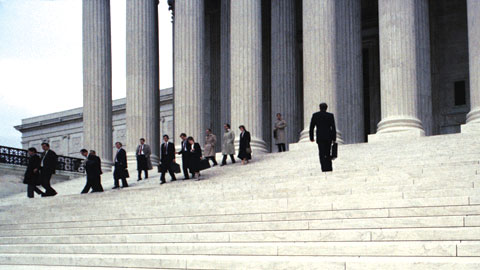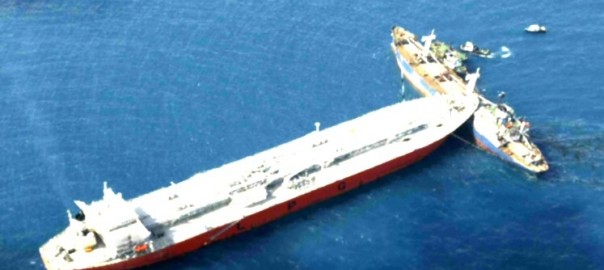INTRODUCTION
- The Convention on the Recognition and Enforcement of Foreign Arbitral Awards (the New York Convention) requires each Contracting State to recognise an agreement to arbitrate.[1]
- The New York Convention also requires the court of a Contracting State, when seized of a matter in respect of which the parties have made such an agreement, to, at the request of one of the parties, refer the parties to arbitration, unless it finds the agreement is null and void, inoperative or incapable of being performed.[2]
- Contracting States have implemented these obligations in various ways. Australia has done so by the International Arbitration Act 1974 (Cth), s 7(2), which requires a court to stay proceedings brought in the face of an arbitration agreement by a party to the agreement.
- By s 7(4), a ‘party’ to an agreement includes a party claiming ‘through or under a party’.
- The recent decision in Flint UK v Huhtamaki Pty Ltd[3] held that s 7(4) can have the effect that a non-party to an arbitration agreement can be compelled by an Australian court to submit to arbitration a claim against a party to the agreement.
THE FACTUAL BACKGROUND
- Flint concerned a claim by an Australian company, Lion Dairy & Drinks Pty Ltd (Lion) against another Australian company, Huhtamaki Australia Pty Ltd (HA) for damages for loss suffered by allegedly defective packaging supplied by HA.
- The packaging had been manufactured in New Zealand and supplied to HA by a company that was related to HA, Huhtamaki Australia Pty Ltd (HNZ).
- HA denied that the packaging was defective, but also claimed that any defect was a result of ink sold to HNZ by Flint Ink NZ Pty Ltd (Flint) and used by HNZ in the packaging it supplied to HA. HA sought to join Flint to the proceedings by way of third party claim.
- HA alleged that Flint owed HNZ, and HNZ’s customers, a duty of care which was breached by Flint providing negligent advice to HNZ that the ink to be supplied by Flint was suitable for the packaging HNZ supplied to HA.
- The agreement between HNZ and Flint contained a provision whereby any dispute, controversy or claim arising out of or related to the Agreement … shall be finally settled by arbitration’.
- There was no agreement between Flint and HA and Flint did not deal with HA.
- Flint sought a stay of the proposed third party proceedings against it, on the basis that HA was, in relation to the claim it sought to make against Flint, claiming by or through a party to the arbitration agreement (i.e HNZ) and that the claim was capable of settlement by arbitration pursuant to the agreement.
- The claim for a stay was refused at first instance. Flint appealed to the Victorian Court of Appeal.
THE STATUTORY BACKGROUND
- By s 7(2) of the International Arbitration Act 1974 (Cth), where proceedings are instituted by a party to an arbitration agreement in relation to a matter that is capable of settlement by arbitration, an Australian court shall stay so much of the proceedings as involves the determination of that matter, on such conditions as it thinks fit, and refer the parties to arbitration.
- By s 7(4), for the purposes of s 7(2), a party ‘includes a person claiming through or under a party’.
- In the Victorian Court of Appeal, it was said that s 7(4) ‘enlarges the definition of ‘a party to an arbitration agreement’ [in s 7(2)] by deeming persons claiming ‘through or under’ a party to themselves be parties to that agreement’ (at [11] per Warren CJ).
THE MEANING OF ‘THROUGH OR UNDER’ A PARTY TO AN ARBITRATION AGREEMENT
- In that context, the meaning of ‘through or under’ is highly material to the scope of the Australian courts’ power to stay proceedings and refer the parties to arbitration.
- The words ‘through or under’ in s 7(4) had been previously considered by the High Court, Australia’s ultimate appellate court, in Tanning Research Laboratories v O’Brien (1990) 169 CLR 332.
- Tanning concerned an appeal against a liquidator’s rejection of a proof of debt that allegedly arose from a contract containing an arbitration clause, giving rise to the question of whether the liquidator was claiming ‘by or through’ the company in liquidation.
- The High Court held that the liquidator, in resisting the claim, was claiming ‘by or through’ the company.
- Although the liquidator was not himself making a claim, it was held that ‘a person who claims through or under a party may be either a person seeking to enforce or a person seeking to resist the enforcement of an alleged contractual right’ (at 342 per Brennan and Dawson JJ (Toohey J agreeing).
- Brennan and Dawson JJ, with whom Toohey J agreed, reasoned that the words ‘through or under convey the notion of a derivative cause of action or defence … that is derived from the party [to the arbitration agreement]’ (at 342). Their Honours also commented that ‘an essential element of the cause of action or defence must be or must have been vested in or exercisable by the party [to the arbitration agreement] before the person claiming through or under that party can rely on the cause of action or defence’ (at 342, emphasis added).
- The High Court held that an essential element of the liquidator’s defence to the creditor’s claim was vested in the company in liquidation, which was a party to a relevant arbitration agreement, as the liquidator stood ‘in the same position vis-a-vis the creditor as … the company’ (at 342 per Brennan and Dawson JJ (Toohey J agreeing)). Accordingly, the creditor’s appeal against the rejection of its proof was stayed and referred to arbitration.
- In Flint, the Victorian Court of Appeal accepted that the ‘essential element’ test ought to determine whether HA was claiming against Flint ‘through or under’ HNZ.
HA WAS CLAIMING ‘BY OR THROUGH’ HNZ?
- HA contended that ‘through or under’ in s 7(4) ‘requires ‘standing in the same position’ as the party to the [arbitration] agreement and is thus restricted to privies whose rights were derived from the party [to the arbitration agreement] via an assignment or other process of law’ (Flint at [18] per Warren CJ; see also at [69] per Nettle JA).
- The Victorian Court of Appeal held that the ‘essential element test was not so limited (at [19]-[20] per Warren CJ, [60] per Nettle JA).
- Further, the court found that the ‘essential elements of [HA’s] claim against [Flint] are that [Flint] breached its agreement with [HNZ] or breached a duty of care to [HNZ] which is alleged to have arisen out of the agreement’ (at [74] per Nettle JA). HA’s claim was ‘critically dependant upon and derivative from the contractual and common law obligations alleged to have been owed by [Flint] to [HNZ]’ (at [76] per Nettle JA; see also at [26] per Warren CJ, at [148] per Mandie JA).
- In those circumstances, the court held that HA’s ‘rights against [Flint] are so closely related to [HNZ’s] rights against [Flint] that [HA] is claiming through or under [HNZ]’ (at [74] per Nettle J).
- Nevertheless, it was noted that a different result would follow where ‘a claimant relies on a duty of care owed directly to [it] which is not dependant upon or derived from any claim’ of another (at [76] per Nettle JA).
THE STAY ORDER
- A peculiar feature of this case was that, as HA was not a party to the arbitration agreement, there was some doubt as to whether it could initiate an arbitration to pursue its claim against Flint.
- The stay power in s 7(2) of the International Arbitration Act, however, permits a court to order a stay ‘on such conditions as it thinks fit’.
- To address any concerns as to HA’s ability to commence an arbitration, the Victorian Court of Appeal granted the stay on the condition that Flint ‘use its best endeavours to refer the [HA] claims to arbitration in accordance with the arbitration clause and pursue the arbitration with due expedition’ (at [117] per Nettle JA; see also at [41] per Warren CJ).
CONCLUSION
- The decision in Flint indicates the breadth of the judicial power in Australia to stay proceedings commenced in the face of an arbitration agreement, which includes referring to arbitration claims by a person who claims by or through a party to an agreement to arbitrate.
- In particular, the stay power extends to compelling persons who are not parties to an arbitration agreement to arbitrate claims that bear a close relation to the contract containing that agreement.
- In Australia, a person who is not a party to an arbitration agreement will be required to arbitrate claims the essential elements of which arise, or are derived, from the contract containing an arbitration agreement, such as the negligence claim in issue in Flint, which was dependant upon a finding that a duty of care was owed to a party to the agreement.
- No doubt there is room for much argument in particular cases as whether the essential elements of a claim are derived from those of a party to an arbitration agreement. Flint indicates, though, that the test may be more readily satisfied where a non-party’s claim arises out of the rights of a related company that is a party to an agreement to arbitrate.
[1] Article II, r 1
[2] Article II, r 3
[3] Flint UK v Huhtamaki Pty Ltd [2014] VSCA 166; 289 FLR 30









